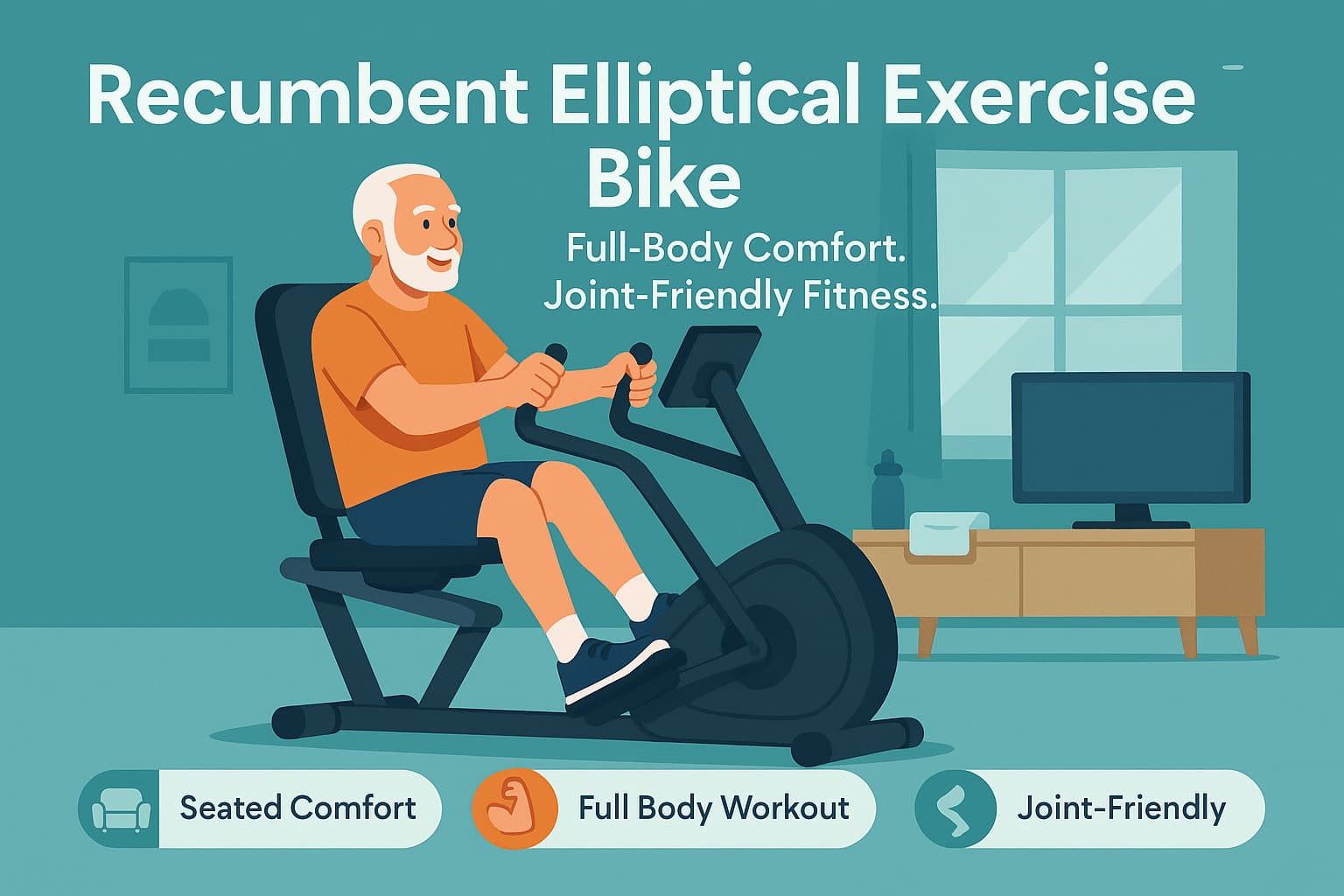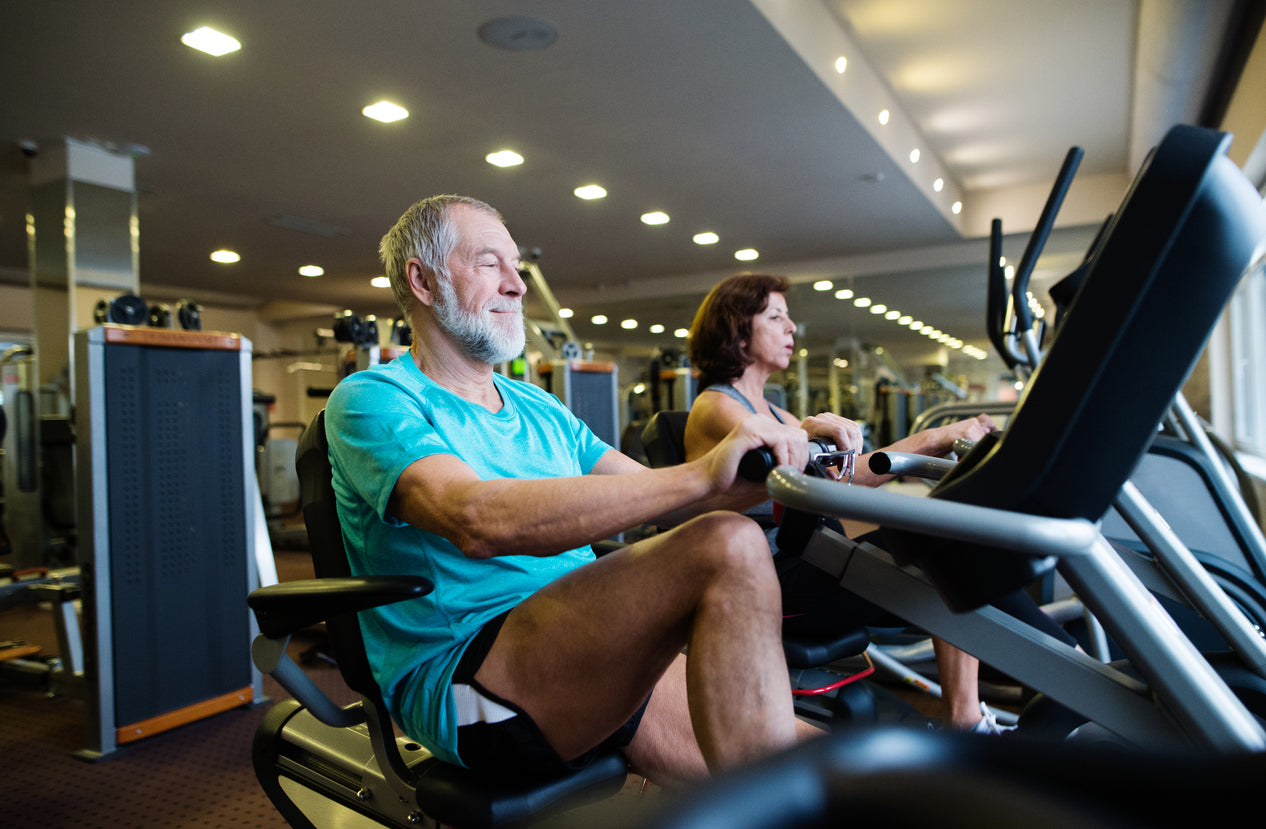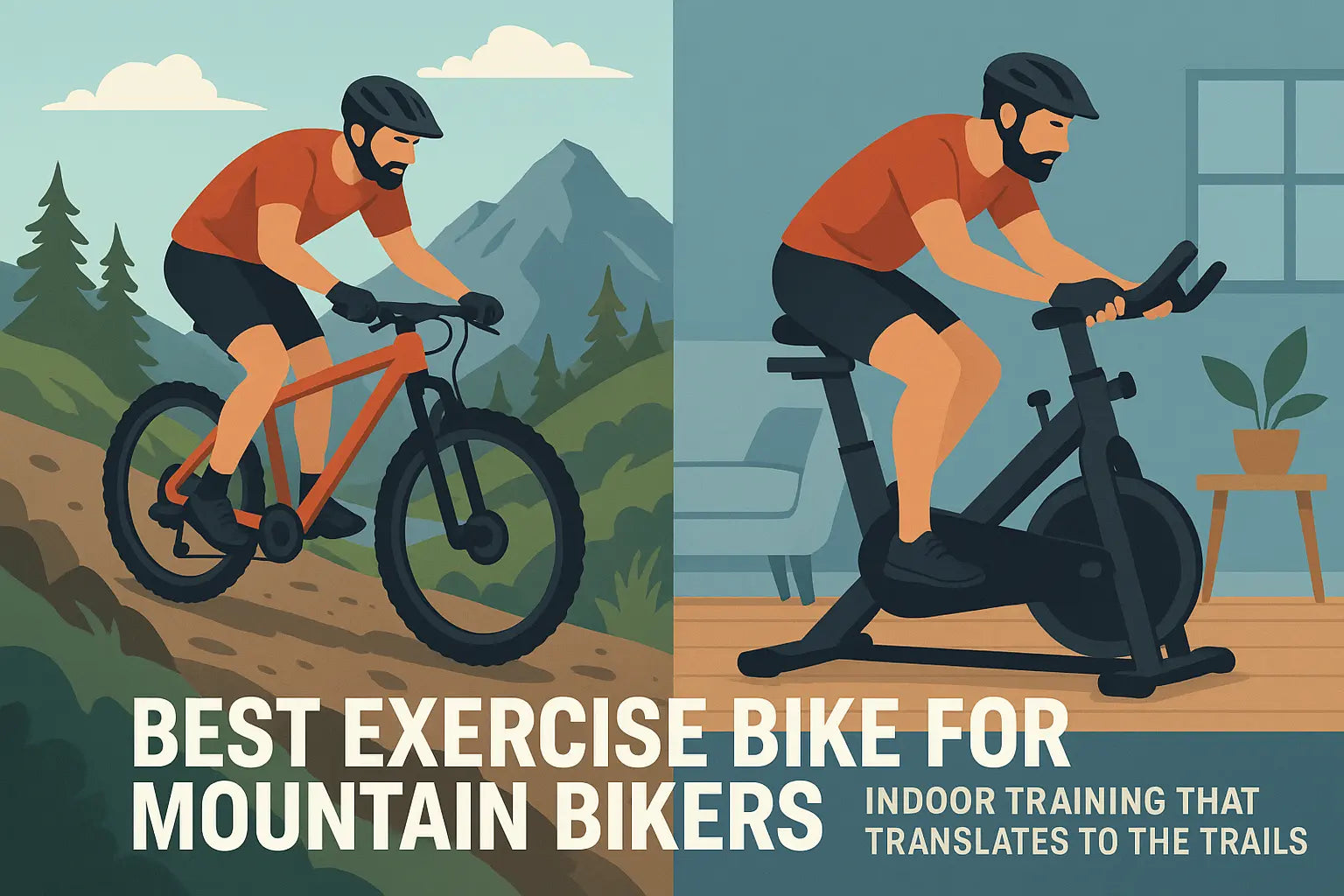The right bike depends on your body and workout goals. Recumbent bikes prioritize comfort, stability, and joint protection, making them ideal for beginners, seniors, or anyone with back and knee issues. Spin bikes, in contrast, deliver high-intensity training, engage more muscles, and burn calories faster.
Both options are effective cardio machines, but they offer very different riding experiences. Recumbent bikes provide a low-impact, supported workout that improves cardiovascular health and mobility, while spin bikes mimic road cycling for endurance, power, and weight loss. Choosing between them comes down to your fitness level, health needs, and exercise style.
What's the Difference Between a Recumbent Bike and a Spin Bike?
A recumbent bike has a reclined seat with back support for low-impact comfort, while a spin bike has an upright, road-bike style design for high-intensity, calorie-burning workouts.
| Feature | Recumbent Bike | Spin Bike |
|---|---|---|
| Body Position | ✅ Reclined seat with backrest | ⚠️ Upright or leaned-forward posture |
| Pedal Position | ✅ In front of the body | ⚠️ Directly under the body |
| Joint Impact | ✅ Low-impact on knees and hips | ⚠️ Greater stress on joints, especially at high intensity |
| Comfort & Stability | ✅ Large seat, stable design—ideal for seniors or long sessions | ⚠️ Requires more core stability and balance |
| Workout Style | ✅ Gentle, steady workouts | ✅ High-intensity, calorie-burning workouts |
| Best For | ✅ Seniors, beginners, rehab users | ✅ HIIT, endurance, and cardio enthusiasts |
What Muscles Do Recumbent and Spin Bikes Work?
Both recumbent bikes and spin bikes primarily target the lower body muscles, but the level of muscle engagement differs due to posture and riding style.
Recumbent bikes place the rider in a reclined position with back support, allowing the legs to work in isolation while minimizing strain on the joints. This makes them ideal for users who want a safe, low-impact way to strengthen the lower body.
Spin bikes, by contrast, mimic road cycling with an upright or leaned-forward posture. They engage the same lower-body muscles while also recruiting the core and upper body—especially during standing rides, sprints, or when resistance is added.
Muscles Worked by Both Recumbent and Spin Bikes
-
Quadriceps (front thighs)
-
Hamstrings (back of thighs)
-
Glutes (buttocks)
-
Calves
Additional Muscles Activated on a Spin Bike
-
Core stabilizers (to maintain posture and balance)
-
Upper body muscles such as shoulders, arms, and back (when riding out of the saddle or incorporating weights)
Source: A study by Holliday et al. (2019), Cycling: joint kinematics and muscle activity during differing intensities, found that spin bikes activate more stabilizing muscles in the trunk and upper body during high-intensity cycling. Recumbent bikes, on the other hand, concentrate muscular effort in the lower limbs due to the reclined posture and supported backrest.
Which Burns More Calories: Recumbent Bike or Spin Bike?
Spin bikes generally burn more calories per minute because they allow higher intensity, full-body involvement, and interval-style training. This makes them a strong choice for yonger users aiming for rapid calorie expenditure and cardiovascular gains.
Recumbent bikes, by contrast, are easier to sustain over longer sessions. Their supportive seat and reclined posture make them comfortable for steady-state cardio, helping middle-aged & seniors burn calories consistently without excessive joint strain.
Calorie Burn Comparison
| Feature | Spin Bike | Recumbent Bike |
|---|---|---|
| Calories Burned | 600–750 kcal per hour (at vigorous intensity) | 450–600 kcal per hour (at moderate intensity) |
| Workout Style | Short, high-intensity intervals or endurance rides | Longer, steady-state cardio sessions |
| Muscle Engagement | Full-body: legs, core, and upper body when riding out of the saddle | Primarily lower body muscles with joint support |
| Joint Impact | Higher load on knees and hips; requires correct posture | Low-impact, joint-friendly movement |
| User Suitability | Best for active users seeking intense training | Suitable for beginners, seniors, or rehab users |
Source: A study titled “Changes in bicycling over time associated with a new bike lane: relations with kilocalories energy expenditure and body mass index” [1] by Brown et al. (2016) highlights that even moderate, sustained cycling routines—similar to what’s done on recumbent bikes—can lead to meaningful increases in daily energy expenditure and support long-term weight management.
Which Is Better for Knees: Recumbent Bike or Spin Bike?
Recumbent bikes are generally safer for the knees than spin bikes. Their reclined seat and back support reduce stress on the knees, hips, and lower back, making them a strong choice for people with joint pain, mobility limitations, or those recovering from injury. Spin bikes, by contrast, place the rider in an upright or forward-leaning posture that can increase joint loading, especially during standing climbs or high-intensity rides.
Joint Health Comparison
| Feature | Recumbent Bike | Spin Bike |
|---|---|---|
| Joint Impact | Low-impact on knees and hips | Higher stress, particularly when riding out of the saddle |
| Back Support | Reclined seat with full lumbar support | No back support |
| Safety & Stability | Very stable, minimal fall risk | Requires balance; higher fall risk in intense sessions |
| User Suitability | Suitable for seniors, beginners, and rehab users | Better for active users with good mobility and balance |
Source A: Crossley et al. (2024) [2] found that semi-recumbent cycling generates significantly lower knee joint contact forces compared to upright cycling, confirming its value for low-impact rehabilitation and safe home exercise.
Source B: Holliday et al. (2019) [3] reported that reclined cycling reduces mechanical loading on the joints, while upright cycling activates more stabilizing muscles—useful for performance, but less joint-friendly for sensitive users.
Final Thoughts
A recumbent bike is better for middle-aged and senior users because its reclined seat and back support reduce joint stress and make long, low-impact workouts more comfortable, while a spin bike is better for younger users because its upright design allows high-intensity training, full-body engagement, and faster calorie burn.
Related Article: Recumbent Bike VS Other Cardio Machines
Reference
- Brown, B. B., Tharp, D., Tribby, C. P., Smith, K. R., Miller, H. J., & Werner, C. M. (2016). Changes in bicycling over time associated with a new bike lane: relations with kilocalories energy expenditure and body mass index. Journal of transport & health, 3(3), 357–365. https://doi.org/10.1016/j.jth.2016.04.001
- Holliday, W., Theo, R., Fisher, J., & Swart, J. (2023). Cycling: joint kinematics and muscle activity during differing intensities. Sports biomechanics, 22(5), 660–674. https://doi.org/10.1080/14763141.2019.1640279
- Crossley, C. B., Diamond, L. E., Saxby, D. J., de Sousa, A., Lloyd, D. G., Che Fornusek, & Pizzolato, C. (2024). Joint contact forces during semi-recumbent seated cycling. Journal of biomechanics, 168, 112094. https://doi.org/10.1016/j.jbiomech.2024.112094
Latest Articles







